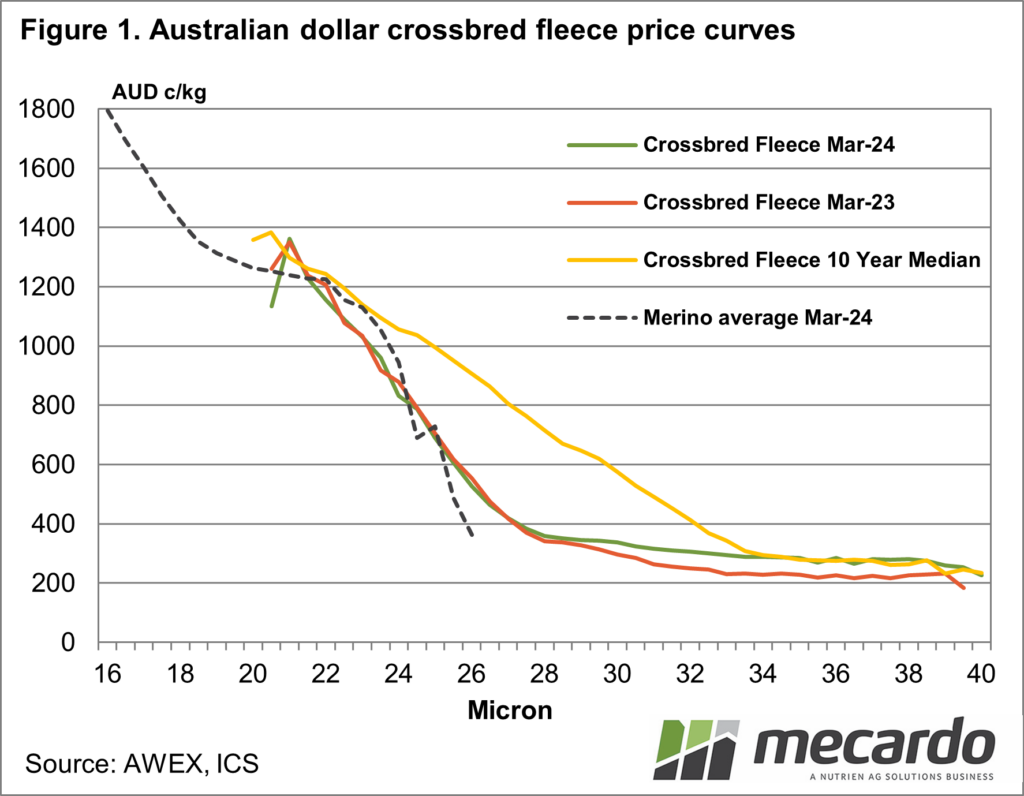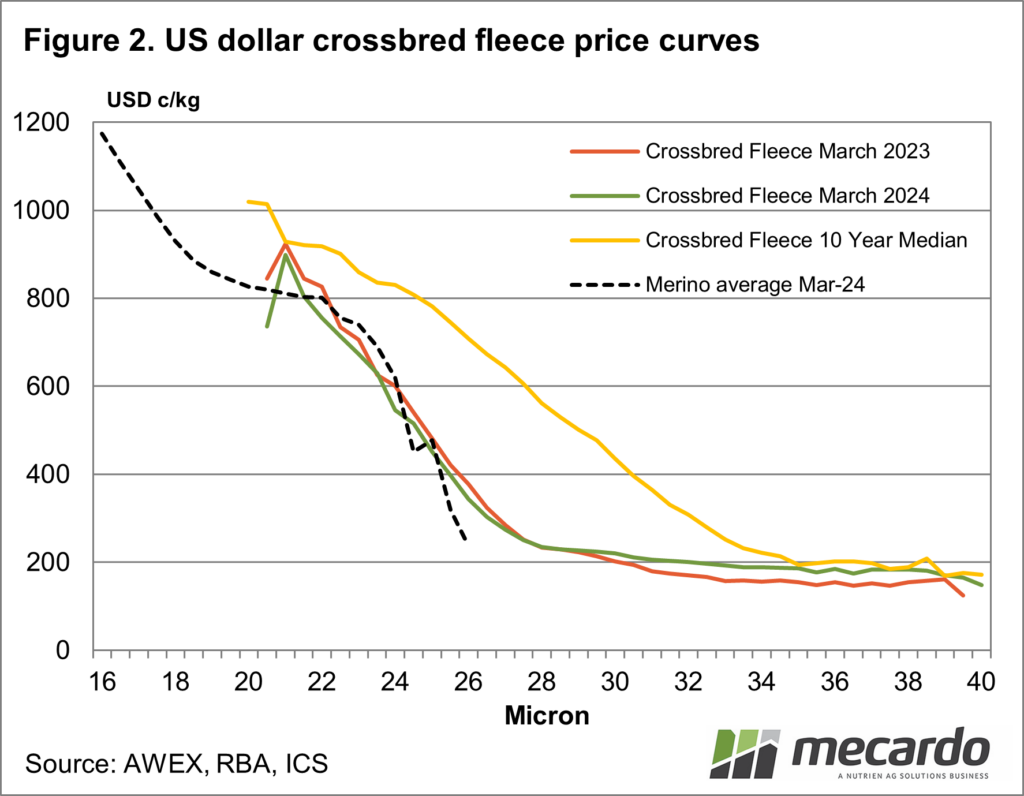As with merino wool, there is a wide range of crossbred qualities. Fibre diameter is one of those measures of quality, and for crossbred wool, it ranges from 20 to 40 microns. This is a wider range of microns than merino wool encompasses, with this in mind, let's look at crossbred price curves.
Mecardo looked at crossbred prices in detail last October (read
here), noting that some signs of life had been observed after a torrid
couple of years of depressed prices. In the season to date (to the end of
February) crossbred volumes sold at Australian auctions were up by 14% in clean
terms, so supply continues to exert downward pressure on prices.
Figure 1 shows the average crossbred fleece price series
across micron categories (20 to 40 micron) drawn from Australian auction data
for March 2023 and March 2024; a ten-year median price level for crossbred
fleece, plus a merino series. The Merino series, a simple “all in” average
price by micron, is added to look at relative prices where crossbred and Merino
supply overlap.
The comparison of current crossbred prices and the ten-year
median level clearly shows the weakness in the key Australian crossbred
categories (26 to 30 micron). 34 micron in Australian dollar terms is currently
very close to the ten-year median level, while the 28-micron category is 50%
below the ten-year median. The gap narrows on the finer side, with 21-22 micron
crossbred fleece trading only 3-9% below its ten-year median level.
In the shorter term, the broader crossbred fleece prices are
up by 60 cents (20-25%) on year-ago price levels, with the 28-micron category
up by 15 cents (5%) or so. Without the help of the weaker Australian dollar in
US dollar terms, the 28-micron price is unchanged year on year and the broader
crossbred categories are up by around US30 cents.
The price difference between the broader crossbred micron
categories and 28 micron are trading at close to 20-year minimums, highlighting
the relatively low level of the 26–29 micron category prices.
Mecardo looked at the correlation of a range of crossbred
price series from different countries in February (read
here), across a range of micron categories. This correlation of prices
between crossbred wool from different countries is a reminder that when we look
at supply and input its probable effect on price, we should really be looking
at the consolidated supply from a range of countries, not simply Australia.
What does it mean?
Crossbred supply at Australian auctions remains plentiful and continues to pressure prices downwards. Despite this, the prices of broader micron categories have lifted compared to year-ago levels in US dollar terms, with no change in 28 micron. A weaker Australian dollar has helped push local prices up beyond the changes seen in US dollar terms. At this stage, the core Australian crossbred micron categories remain extremely cheap in relation to historical levels and to broader crossbred prices.
Have any questions or comments?
Key Points
- Broad crossbred prices are trading close to their ten-year median levels.
- 26-28 micron crossbred prices are trading around half of their ten-year median levels.
- Price differences between 28-micron and broader micron prices are close to 20-year minimums.
- Prices have lifted in Australian dollar terms for the main Australian crossbred series, lifted by a weaker Australian dollar.
Click on figure to expand
Click on figure to expand
Data sources: AWEX, RBA, ICS, Mecardo














